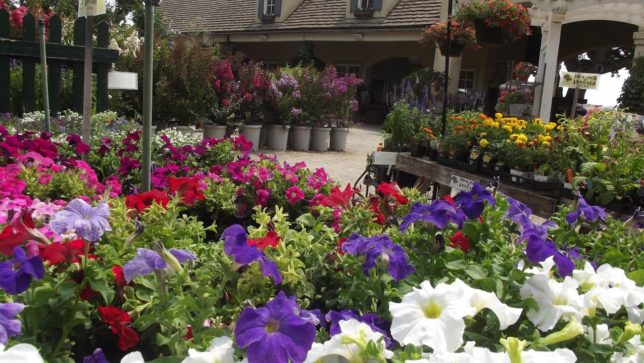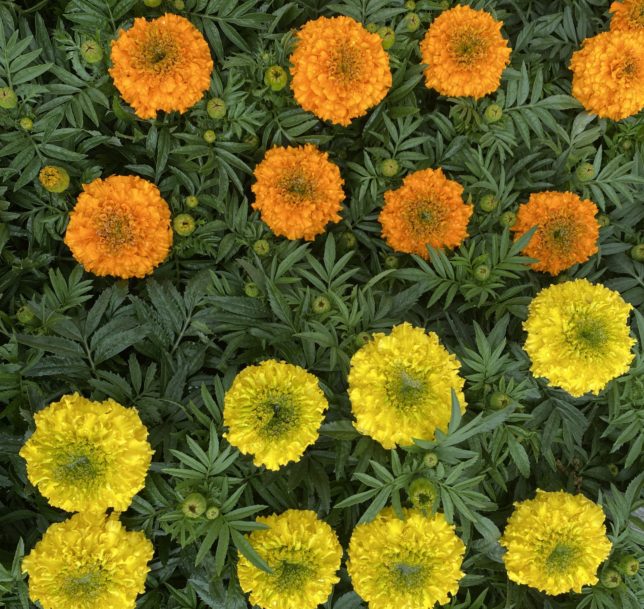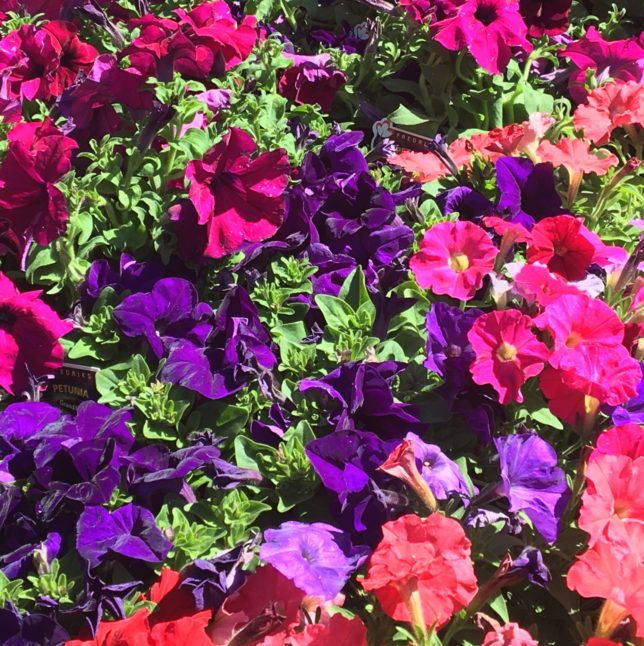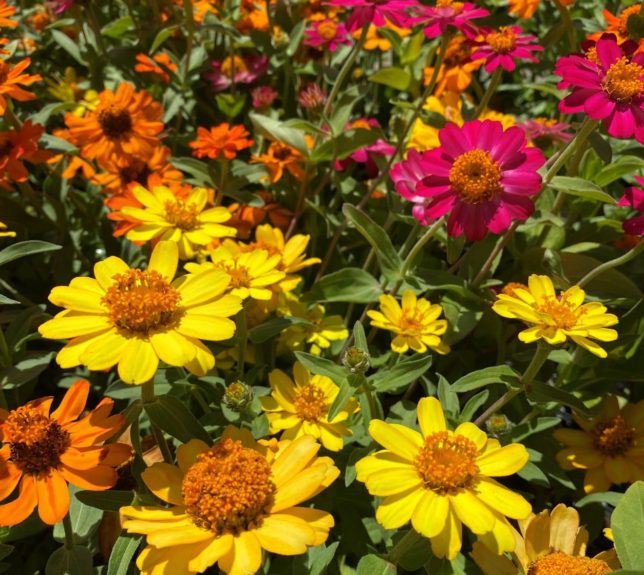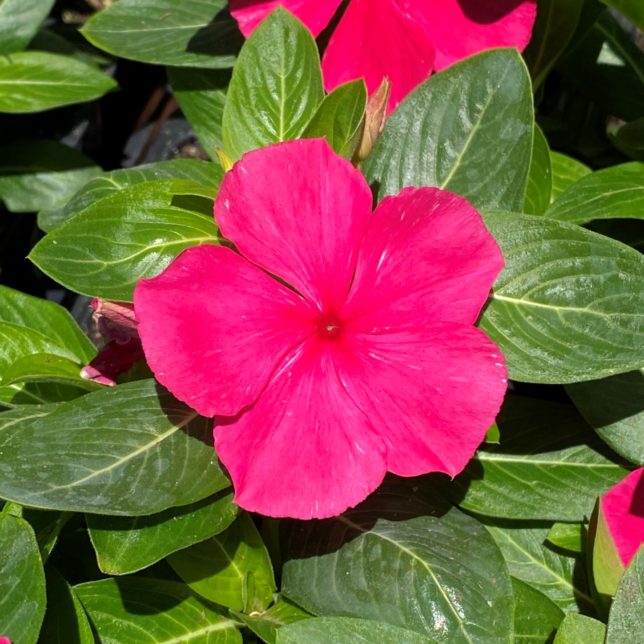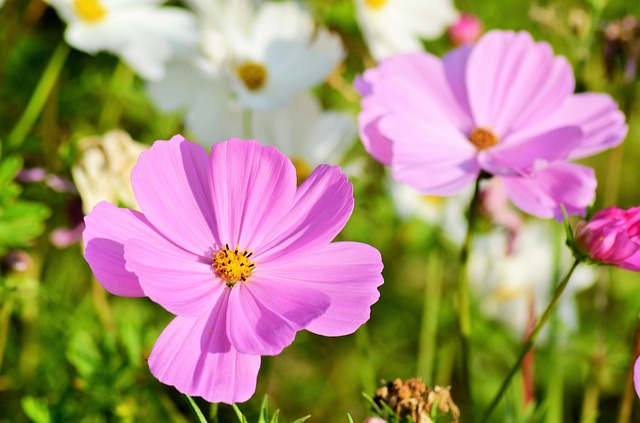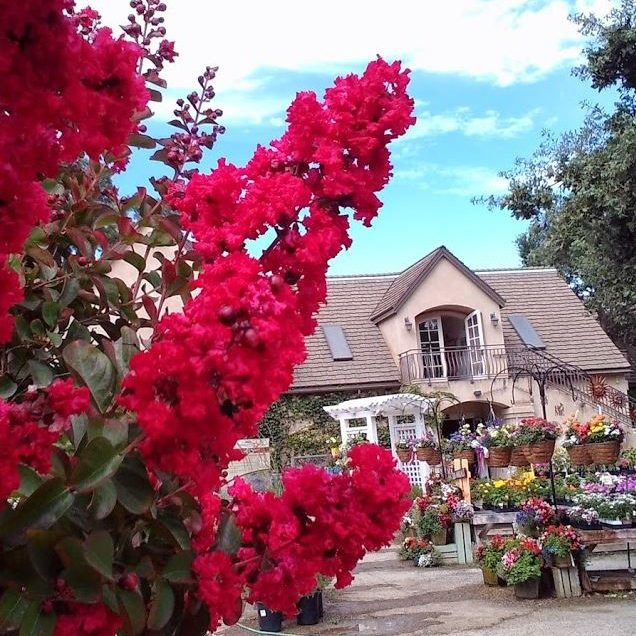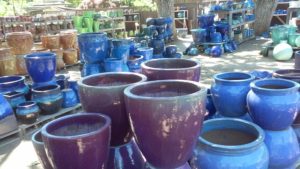 Almost everything that grows in the ground will also grow in containers, and the portability of container gardening means you can bring plants to the patio, and enjoy a summer retreat with the beauty, color, texture, and vibrance that living plants bring.
Almost everything that grows in the ground will also grow in containers, and the portability of container gardening means you can bring plants to the patio, and enjoy a summer retreat with the beauty, color, texture, and vibrance that living plants bring.
Containers allow you to have a portable garden that you can rearrange whenever the mood strikes. Containers also provide perfect drainage, so plants thrive as long as you provide adequate water and correct sun exposure.
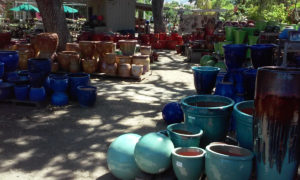 Perennial Gardens
Perennial Gardens
Colorful annuals with perennials in containers make a winning combination. Annuals provide constant color and perennials give interesting textures, foliage color, and flowers. Perennials come in many different sizes and can provide dramatic foliage as a focal point for your moveable garden. Perennials bloom at varying times of the year, so there’s always something of interest blooming in your containers. And as the perennials grow, they provide a bigger and more beautiful display every year.
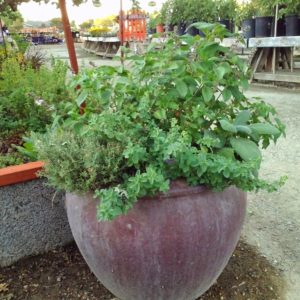
Fragrant Herb Gardens
Make your herbs a decorative centerpiece this summer. Arrange your favorite herbs in a ceramic planter, wine barrel, or fill a hanging moss basket with herbs. Put thyme, rosemary, and oregano on the sides of the basket and borage, parsley, sage, basil, and chives in the top of the basket. Fertilize twice a month. We suggest that you use Master’s Pride Professional Potting Soil and E.B. Stone Sure Start Organic Fertilizer. Both products will help you grow the best herbs in the neighborhood. Once you’ve selected your container and you’re ready to plant, remember we carry a large selection of herbs including some of the favorites such as basil, chives, dill, fennel, oregano, parsley, rosemary, thyme, and tarragon.
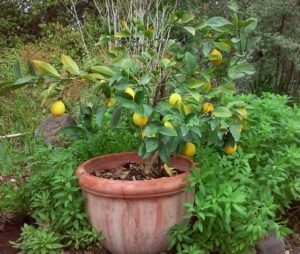 Sweet Scented Citrus Gardens
Sweet Scented Citrus Gardens
If you’re looking for a plant that does it all – look no further than citrus. It’s a plant for all seasons. You have shiny leaves, fragrant flowers, showy fruit and to top it off you can plant the dwarf varieties in large containers. Lemons, limes & kumquats do well in partial shade while sweeter citrus such as oranges, grapefruit, tangerines need full sun. Citrus shows off its colorful fruit in winter when many plants are dormant.
Small Trees There are a number of smaller trees that are very happy to live in containers and can add visual “green” interest to a place where that might be missing. In addition to the citrus mentioned above, consider a “Little Ollie” non-fruiting olive tree or perhaps a Japanese maple.
An excellent soil mix is Master’s Pride Professional Potting Soil with the addition of Soil Moist water holding granules. The granules absorb many times their weight in water and release it as needed and will cut your watering frequency in half. These products will help you grow bigger, tastier vegetables and more beautiful flowers.
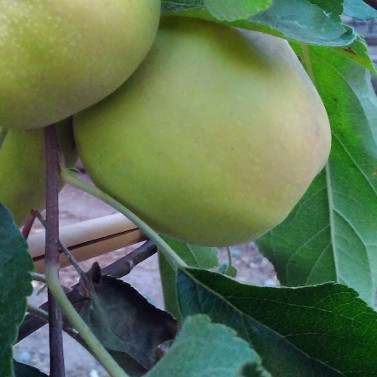 Have fun with fruit trees in your front or back yard. You don’t need acres of ground to experience the taste of freshly picked fruit. With today’s dwarf & semi-dwarf rootstocks, everyone can grow at least one fruit tree no matter how small your yard. Consider planting a fruit tree or two in your front yard.
Have fun with fruit trees in your front or back yard. You don’t need acres of ground to experience the taste of freshly picked fruit. With today’s dwarf & semi-dwarf rootstocks, everyone can grow at least one fruit tree no matter how small your yard. Consider planting a fruit tree or two in your front yard.
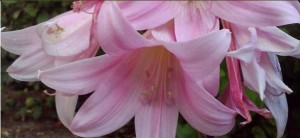 Amaryllis Belladonna is a late summer/fall blooming lily which grows from a large bulb. They can survive with absolutely no additional water once established, putting on a lush display of strap-like leaves as soon as rains fall in November. By the dry days of summer, they shed their leaves again and remain hidden and protected to emerge in July as naked stalks reaching skyward to about 2 feet, then they bloom.
Amaryllis Belladonna is a late summer/fall blooming lily which grows from a large bulb. They can survive with absolutely no additional water once established, putting on a lush display of strap-like leaves as soon as rains fall in November. By the dry days of summer, they shed their leaves again and remain hidden and protected to emerge in July as naked stalks reaching skyward to about 2 feet, then they bloom.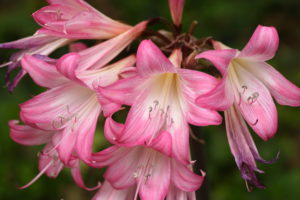 Amaryllis grow in full sun to light afternoon shade. You can find them naturalizing around old homes and wooded areas, a testament to their longevity without care. They can do well with or without regular water, but they don’t want to sit in water or moist soil.
Amaryllis grow in full sun to light afternoon shade. You can find them naturalizing around old homes and wooded areas, a testament to their longevity without care. They can do well with or without regular water, but they don’t want to sit in water or moist soil.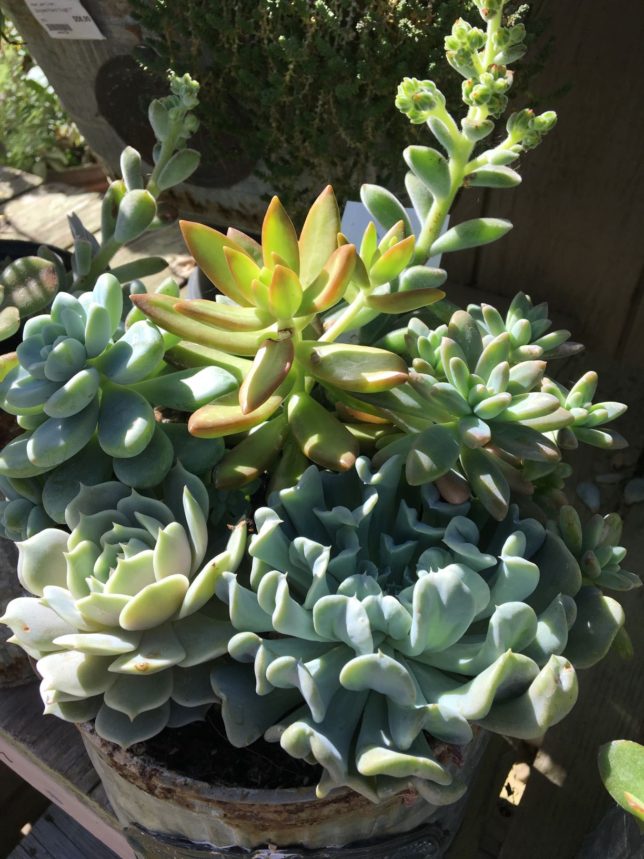
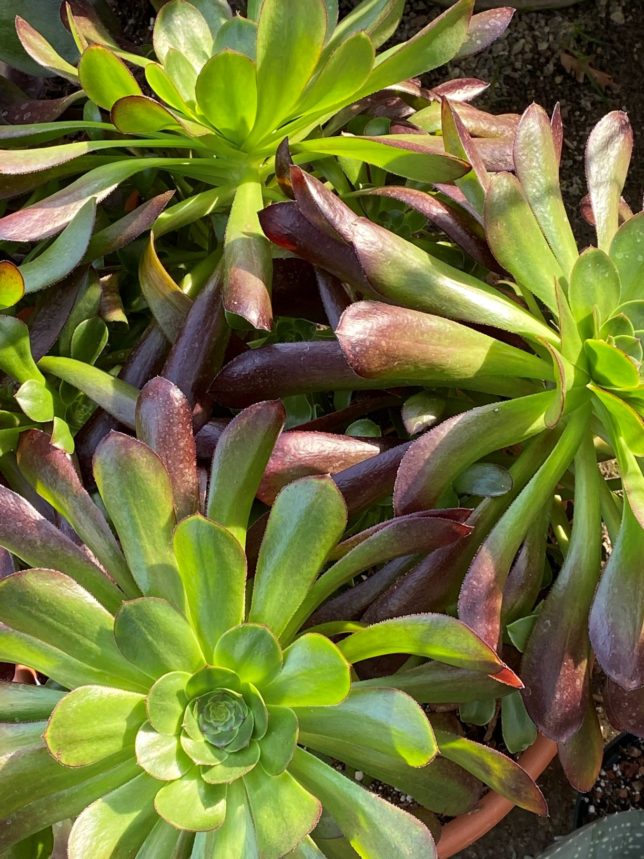
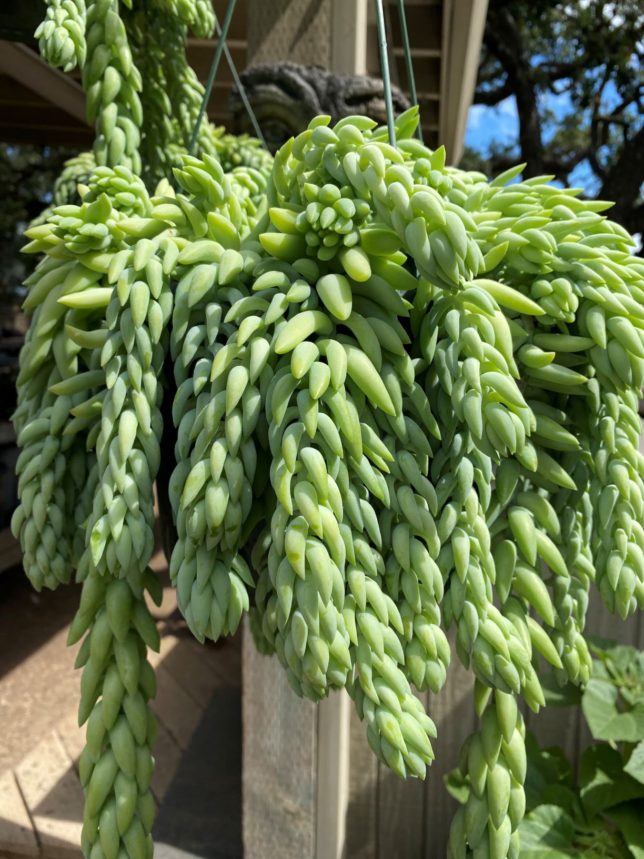
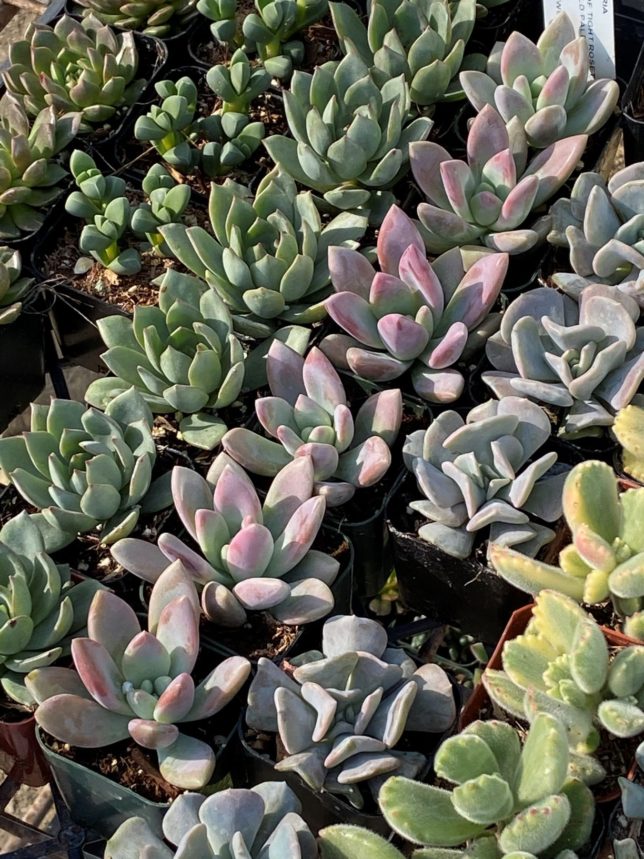
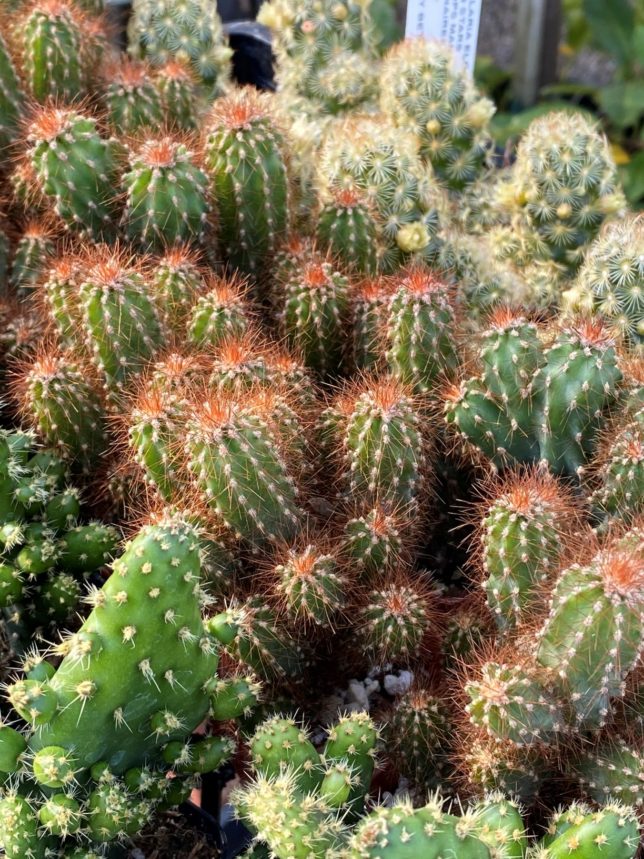
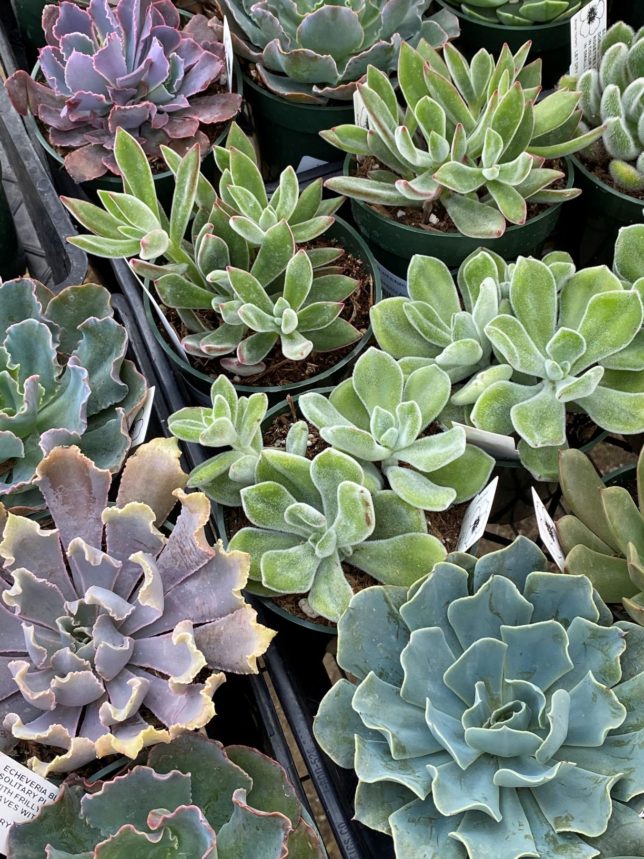
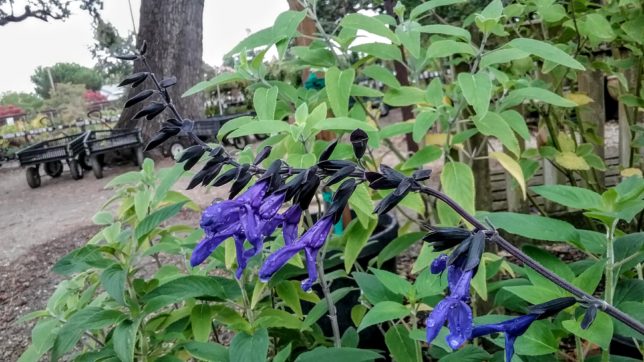
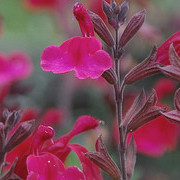 Salvia greggii – Known as Autumn Sage, this variety is available in a number of flower colors – red, yellow, pink, white and purple. Erect growth to about three feet with medium green foliage. Plant in full sun.
Salvia greggii – Known as Autumn Sage, this variety is available in a number of flower colors – red, yellow, pink, white and purple. Erect growth to about three feet with medium green foliage. Plant in full sun.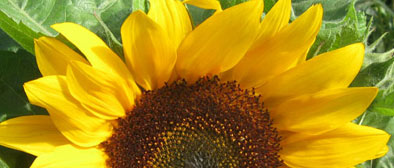 August is surprisingly good time to plant sunflowers from seed. Warm yellow sunflowers popping into bloom set the mood perfectly as days shorten and fall arrives. Make plans now for a seasonal transition.
August is surprisingly good time to plant sunflowers from seed. Warm yellow sunflowers popping into bloom set the mood perfectly as days shorten and fall arrives. Make plans now for a seasonal transition.![davesrosemarch[1]](https://www.aldenlane.com/m/wp-content/uploads/2016/02/davesrosemarch1-300x233.jpg) Apply in AUGUST and MARCH.
Apply in AUGUST and MARCH.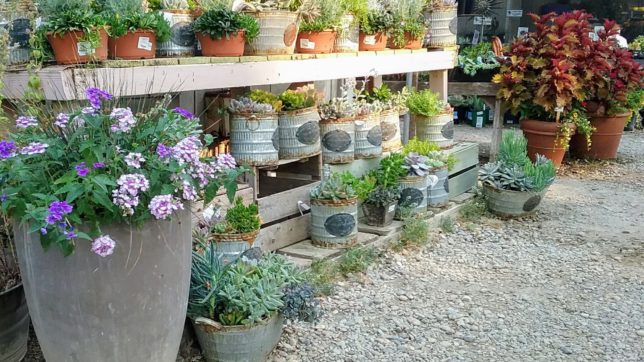
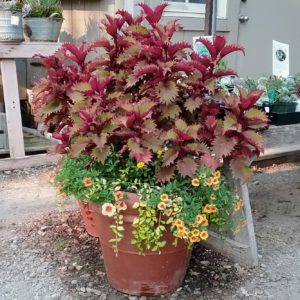 Test soil around plants before watering
Test soil around plants before watering Almost everything that grows in the ground will also grow in containers, and the portability of container gardening means you can bring plants to the patio, and enjoy a summer retreat with the beauty, color, texture, and vibrance that living plants bring.
Almost everything that grows in the ground will also grow in containers, and the portability of container gardening means you can bring plants to the patio, and enjoy a summer retreat with the beauty, color, texture, and vibrance that living plants bring. Perennial Gardens
Perennial Gardens
 Sweet Scented Citrus Gardens
Sweet Scented Citrus Gardens